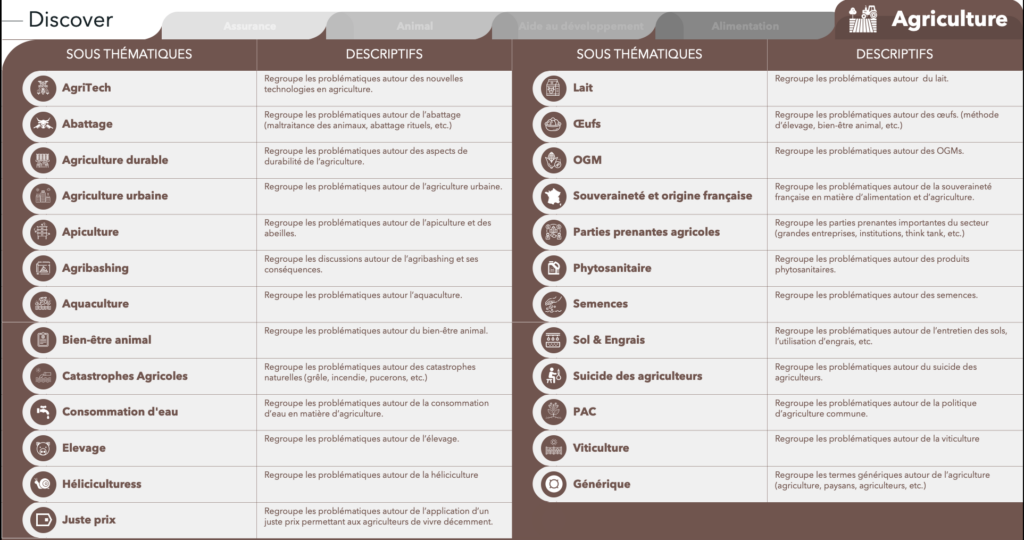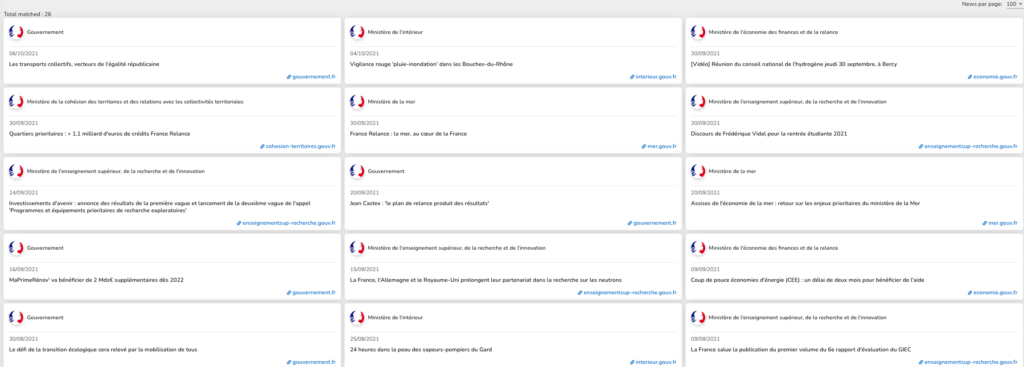Sommaire
Genesis of Follaw.sv – A Legislative and Institutional Monitoring Platform Dedicated to Public Affairs
While I have conducted many analyses on this blog, I have rarely shared my personal or professional milestones. If you've missed previous episodes, after my research career at UCL, I fully joined the agency I co-founded: Saper Vedere.

I was supported by my associate, Erwan de Rancourt, a former collaborator of Michel Barnier, to help structure the firm. Together, we sought to combine his expertise in public affairs with my experience in sensitive matters and data analysis to create Follaw.sv: a legislative monitoring platform dedicated to public affairs.
I would like to revisit the origins and foundations of this platform, as it required combining the knowledge I gained from using monitoring software, my data analysis skills, and the expertise of others involved in the project (database management, development, UX/UI design, etc.), as well as the commercial knowledge acquired by the teams from previous experiences, and applying all of this to a new monitoring domain: public affairs.
Supported by a great team and a group of beta testers, we had to:
- Find a philosophy based on issues rather than just legislation.
- Adapt social networks and their management to public affairs.
- Create a system of predefined queries tailored to specific issues.
- Add extra features to existing documents.
- Incorporate related sources.
If you're interested in Follaw, you can schedule a presentation:
Finding a philosophy: Issue management
Every product needs a philosophy with a clear stance. Follaw’s main approach was to view public affairs as extending beyond the institutional realm, starting with issues. Before becoming a bill, a societal topic first becomes a societal issue (glyphosate, renewable energies, piracy of cultural works, 5G, etc.).
This vision stems from theories around issue management. Applied to public affairs, it highlights the importance of social networks as a corpus in managing public affairs for a federation or organization.

Social Media: An outlier for Public Affairs
If you are familiar with this blog, you know that I master social networks in terms of crisis phenomena, societal tensions, or political communication, all of which are closely related to public affairs.
However, it was impossible to apply the logic used for a SaaS platform. Based on feedback from our beta testers, all public affairs professionals, it became clear that:
- They have little interest in reputational issues. Their company might be subject to client problems or negative press, but they pay little attention to it.
- They consider social media as outliers. It’s not part of their usual corpus, and they are skeptical about its utility.
- They monitor highly generic keywords like "ecology," "energy," or "transport," which create a lot of irrelevant noise.
It became clear that the focus should be on who is speaking, not just the keywords used. Hence, we developed the idea of creating a social media panel of influential people.s, mais qui s'expriment. Est venu alors l'idée de créer un panel social media des gens qui comptent.
It's a huge question: what makes a user count?
Generally, we focus on the tweets of politicians (senators, deputies, regional councilors, etc.), journalists and media, lobby groups (federations, leaders, lobbyists, etc.), as well as institutions or events. We then used Saper Vedere's ecosystem triangulation methodologies to outline all the key fields for our prospects, and week after week, we created a database of 15,000 users belonging to civil society who are aware that they are public figures.
The challenge was removing all the activists and influential people who are not public figures. We then categorized them by stakeholder type.
Thus, if an ordinary person uses the word "metro" in common phrases ("I'm on the metro", "It smells in the metro", "I'm waiting for the metro", etc.), organizations and politicians rarely make this type of publication, allowing us to monitor relevant issues.
Even better, it’s possible to see how a law is resonating with public opinion. For instance, by examining three different laws, we can clearly identify three different logics just by the volume of actors involved:
- The pension reform has a broad scope, involving lobby groups, politicians, and the media.
- The Avia law is mainly political and media-related.
- The bioethics law is highly political.

This analysis provides strategic insights to influence change. Thanks to Follaw, our clients can now follow all politicians speaking on their topics in real-time and even filter by specific political groups.
Follaw's initial strength was established through my social media: a panel of key forces in public affairs and lobbying, allowing for automatic identification of stakeholders.


Overcoming the fear of the blank page and covering broader themes
Another issue encountered: most people who set out to create a public affairs software approached it as a public document search engine.
The idea was to give users a search bar where they have full control.
This brings a whole set of problems for users:
The issues users follow are incredibly broad and cover several keywords. It's challenging for inexperienced actors to build their own queries. An issue like "phytosanitary" is built around a multitude of keywords (Destop, Phytosanitary, Glyphosate, Asian Hornet, insecticide, fungicide, pesticide, herbicide, biocide, phyto, SDHI, chlordecone, etc.), and users themselves are unaware of the vastness of the possible fields. They then type simple keywords, expecting one word to give access to all the available documentation on the subject. (In other words: they expect to have a real Google applied to public affairs).
The terms that actors have in mind are completely different from those used in the texts. For example, the "climate law" is called this by the press and all actors, but in reality, it is "the law against climate change", while the 4D law is "the Bill on differentiation, decentralization, deconcentration and various measures to simplify local public action". Typing these words in the search bar does not lead to the right texts.
Quickly, the user falls into a "blank page syndrome", not knowing what to type. They return to their usual monitoring practices, opening 485 tabs in a familiar format. Their use of the platform becomes more active than they would like.
Users are looking for broad themes. These themes encompass multiple topics, and the themes assigned by the Senate and the National Assembly are quite poor, incomplete, and do not offer a solution.
To address this, we had to focus on these broad themes. Starting from all the texts of the National Assembly, all the questions, all the official journals, we created strong, pre-built queries.
Thus, over many months, we created no less than 750 pre-built queries, currently covering 23 major themes grouped into sub-themes.

Thus, as soon as a public affairs director arrives at another company with a different theme, or when an agency wins a budget, they can quickly identify the ongoing parliamentary shuttle around the sector.

The creation of "features" to go beyond the simple documentary vision
Follaw's third challenge was to understand the needs of public affairs professionals in order to access the same texts as the sources we covered, but by improving the user experience.
When a public affairs professional works on a legislative dossier, they sometimes have to analyze PDFs of hundreds of pages to isolate the parts important to them. On the dossier, numerous amendments can be submitted.
For the 2022 PLF, for example, there were 201 pages for 3,113 amendments. Follaw analyzes the entire text and amendments and isolates the important articles where there is parliamentary activity related to the themes.

Amendments concerning energy account for 472 out of 3,113 (15%). At a glance, you can see the topics being discussed. At a glance, you can also see where the "amendment war" is happening related to the topic.

They are first sorted by rapporteurs, then by government amendments, the main opposition parties, and finally by the smaller parties. The isolation of an amendment is also aided by the explanatory memorandum, which makes it possible to integrate all the possibilities that an amendment could be useful for a user.

We also provided the ability to filter based on many different criteria (political groups, stakeholders, specific keywords, etc.) and easily export all the amendments into Excel.
We also realized that dropped or rejected amendments were deleted from the institutions’ websites, meaning consultants kept files full of screenshots of important amendments. Our database management solves this issue!
Furthermore, managing national policies is also much easier, allowing the identification of key and active parliamentarians on a specific topic. We called this PRM (Politician Relationship Management).





This political vision also enabled us to manage beyond the Senate and the National Assembly to include local or European politicians for a more local and filterable view. (We can filter by locality).
Adding related sources
n addition to implementing highly customizable alerts (with all filters) on all corpora, we also had to address another challenge, which was to add as many sources as possible, including agendas (more than 20 managed, such as political guests in the media), press releases from ministries, or appointments.



This is the genesis of Follaw.sv, a project that was fascinating to me in every way, both in terms of information knowledge (handling new corpora, understanding new uses, refining my knowledge of creating semantic queries), management (managing teams with knowledge I didn’t have, creating everything from scratch), and business (developing a commercial pitch outside of my usual fields).
In the meantime, I have plenty of additional ideas (creating a trend panel via our panel and pre-set queries, adding lobbying corpora, etc.), but that will be for the next steps! In the meantime, you can book a full demonstration here.



